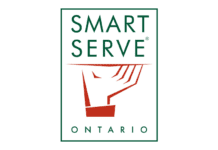Michael Pollan, food advocate and author of In Defense of Food, says it best: don’t eat anything your great-grandmother wouldn’t recognize as food. That idea is catching on at dozens of Canadian restaurants where chefs are embracing local, seasonal fare. So, it makes sense that this year’s CRFA Show connected operators to purveyors at an Ontario pavilion.
It’s fitting, since the noted Ontario locavore movement is gaining attention worldwide, largely due to the Friends of the Greenbelt Foundation, a registered charity created to support the preservation of Ontario’s greenbelt. “We get calls from Europe asking ‘how do you do that?’ — they want to learn from the Toronto model,” says Burkhard Mausberg, CEO, Friends of the Greenbelt Foundation. Now recognized as local-food leaders around the world, Mausberg says his organization’s template for change is envied by many. “Not only do we have a leading greenbelt law, but we have a leading food economy others are now emulating.”
That Toronto model was founded on 1.8 acres of green space, the largest greenbelt in the world, says Mausberg. But, rather like the food produced there, the good reputation of the Greenbelt Foundation and the green space itself, took time to grow. The spotlight on local food today is the result of seeds germinated a decade ago when the Ontario government consulted on an idea to protect Ontario’s most treasured farmland. Defending against the threat of development, the government sought to create a greenbelt; an invisible border protecting Ontario’s lush farmland. Ontario’s greenbelt was formed to protect the natural environment, restrict land use, prevent speculation and promote the beauty of southern Ontario’s agriculture and its bounty.
The restructuring of the food-value chain in one of Canada’s busiest conurbations is uniting millions of chefs and consumers looking for quality products with farmers looking to earn a decent living. “We spend a lot of money promoting farmers’ markets in the greenbelt area,” says Mausberg who explains that, in the last six years, the markets have collectively shown a year-over-year increase in business of eight per cent. “That’s a great mechanism for farmers in the distribution world, because the farmer gets the full value. If I take an apple to market I can get whatever the market will pay me, whereas a grocery store takes their percentage.”
So, it’s only natural that Mausberg is also CEO of the Greenbelt Fund, which was founded in 2010 to support “farm viability in the greenbelt” by funding Ontario activities. “The Fund is all about bringing local Ontario foods to patients’ plates in hospitals and the plates of our students in schools and universities,” explains Mausberg. “The purpose of the grant program is to make small, key catalyst investments to affect the food-value chain to substitute imported products for Ontario and Greenbelt-grown products.” In fact, the foundation has awarded almost $3 million in grants to individuals, helping them improve productivity in their business, while helping the environment.
One memorable Greenbelt victory comes from the supply side of the foodservice business. “Sysco came to us and said they wanted to sell more Ontario cheese, but in their ordering system a customer could only order certain cheeses. There was no point of origin,” Mausberg explains. Sysco’s now reaping the benefits of the Greenbelt Fund’s passion, after requesting money to reprogram its ordering system to showcase Ontario cheese. “A small investment, relative to Sysco, of $200,000, and they’re now selling $2 million more of Ontario cheese per year,” Mausberg says.
And, the Greenbelt Fund’s catalyst investments are working, too. For example, one initiative aligned with the Green Energy Act aided farmers with a cash injection and improved the environment, by helping farmers save money through power savings. “We launched a program called Farm Power,” says Mausberg, explaining the grant program. “It’s an incentive with a total [pool] of $250,000, and we’re aiming to get around 30 farmers to sign up. By the time the program is launched, we’ll probably be over-subscribed,” he says.
The foundation’s forward thinking has earned the organization many avid fans in the foodservice supply chain. “We’ve been duck farming for a long time, and because we breed and hatch and grow, it’s important that we’re able to continue our business and not be encompassed by development,” says Patti Thompson, VP, Sales and Marketing, of Aurora, Ont.-based King Cole Ducks.
Producers are also given a leg up via OntarioFresh.ca. The Internet site, managed by the Greenbelt Fund, is an online marketing portal designed to help Ontario businesses buy and sell more local food. “Ontario Fresh [promoted] us on their website,” says Scott Mahon, president of Wow Butter, a family owned manufacturer of a soybean butter, which is marketed as a peanut-butter replacement. “It really shows that we are what they stand for: a local company where we do everything from start to finish, from growing the soy beans ourselves as well as purchasing from other local farmers,” says Mahon. “The entire production process is done locally, and we’re selling our product to local businesses as well as further abroad as much we can. We’re big believers in growing the Ontario market. And we like the fact Ontario Fresh is involved with that,” he says.
Moving forward, the Greenbelt Foundation will continue to foster a community that cherishes locally grown and locally raised products. “And the payback is tremendous,” says Mausberg. “For every dollar that we’ve invested at the Greenbelt Fund, five more dollars so far, of Ontario food, has been bought. I wish my RRSP would do that,” he laughs.




















